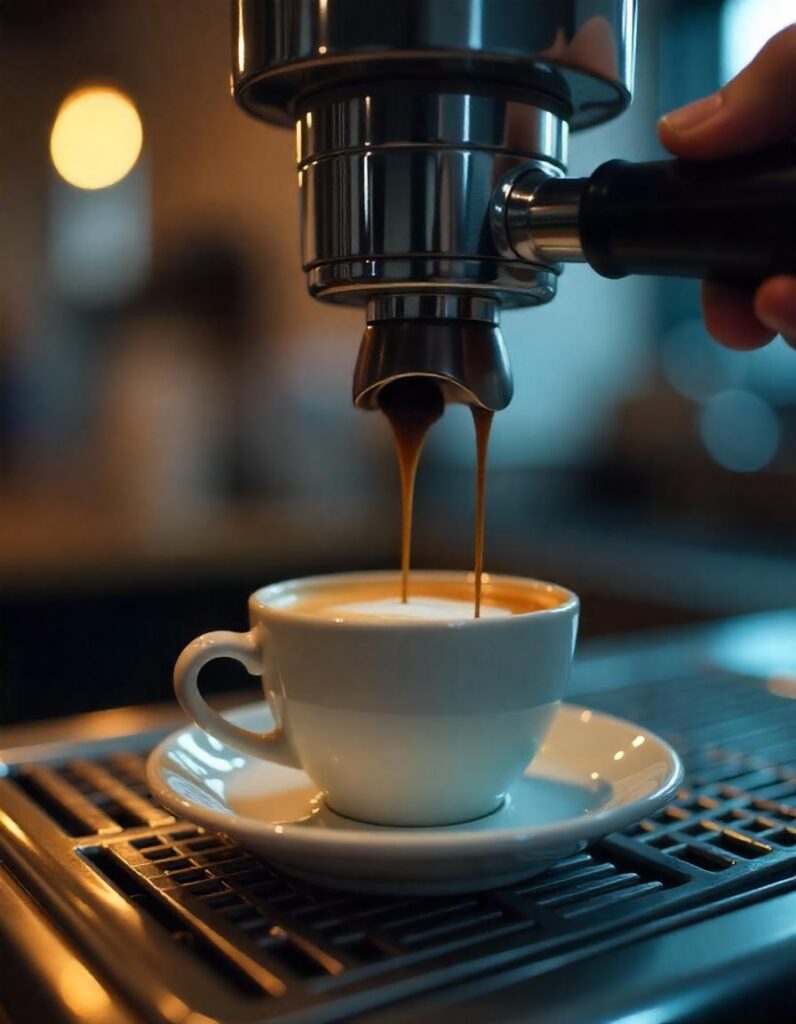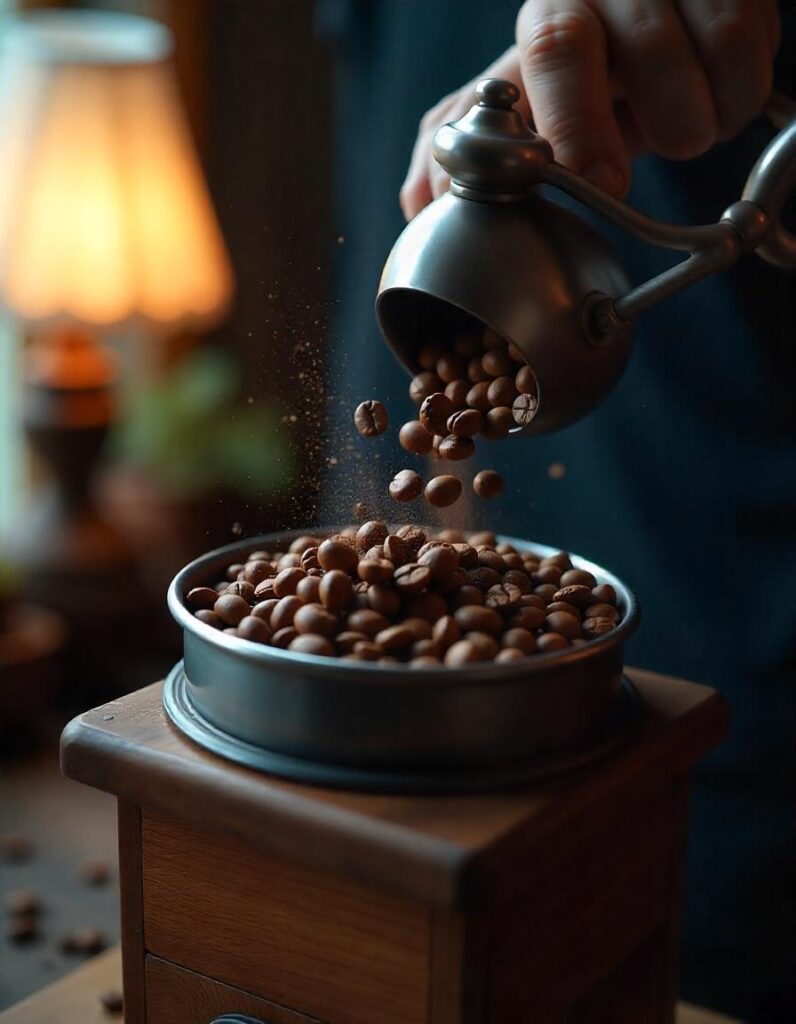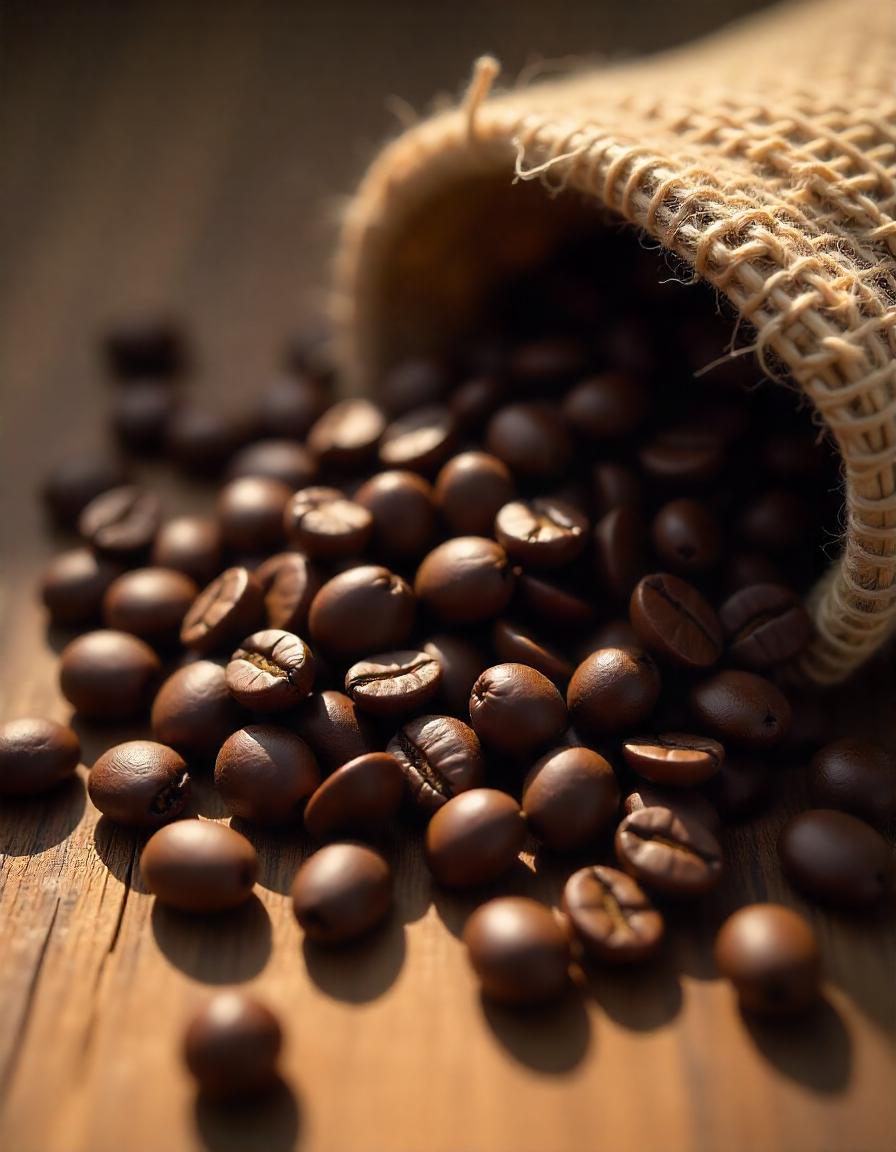For some, it’s the lifeblood of their daily routine, the first thing they reach for in the morning. For others, it’s a luxurious indulgence they savor in the afternoon. But beyond the rich aroma and the comforting warmth it offers, there’s a lot more to coffee than meets the eye. Whether you’re a casual drinker or a seasoned aficionado, understanding coffee on a deeper level can enrich your experience. So, let’s dive into the wonderful world of this drink, starting with its history, benefits, and common problems.
Table of Contents
A Deep Dive into the World
At its core, coffee is a beverage made from roasted beans, which are the seeds of berries from the Coffea plant. But to truly appreciate coffee, we need to look beyond its definition. From its origins to the complex brewing process, it has evolved into a global commodity enjoyed by millions around the world.
History: From Discovery to Global Phenomenon
The story begins in the 9th century in Ethiopia, where legend has it that a goat herder named Kaldi discovered the energizing effects of coffee berries after noticing that his goats became frisky after eating them. Fast forward to the 15th century, and it had made its way to the Arabian Peninsula, where it was first cultivated in Yemen. By the 17th century, it spread to Europe and beyond, eventually becoming one of the world’s most popular beverages.
Coffeehouses, known as “qahveh khaneh” in the Middle East, became places for intellectual discussion and social gatherings. The first coffeehouse in England opened in 1652, and these spaces quickly became hubs for political and cultural conversation. Coffee’s ability to stimulate the mind and spark conversations led to it becoming intertwined with society and culture worldwide.
The Coffee Plant: Understanding the Bean
The coffee plant is a tropical evergreen shrub that produces small, red or purple fruit called cherries. Inside these cherries are the beans the part we consume. But not all beans are the same. There are two main types of beans: Arabica and Robusta.
Arabica vs. Robusta
Arabica beans are generally considered superior due to their smooth flavor and aromatic qualities. They make up about 60-70% of the world’s production. These beans grow at higher altitudes and require cooler temperatures. The flavor of Arabica is typically fruity and sweet, with notes of floral, nutty, and chocolate undertones.
On the other hand, Robusta beans are more robust (hence the name!) and are known for their stronger, more bitter flavor. They have a higher caffeine content, which gives them a more intense kick. Robusta beans are typically used in espresso blends because they produce a thicker crema and have a more intense flavor.
Brewing Process: How to Make the Perfect Cup
Now that we know a bit about the history and the beans, let’s talk about how to brew that perfect cup of coffee. Brewing is an art there are so many variables to consider, from the type of beans you use to the grind size, water temperature, and brewing method.
Grinding the Beans: Why It Matters
Grinding your beans just before brewing is crucial for the freshest taste. When beans are ground, they start to lose their flavor almost immediately. The grind size can also significantly impact the flavor of your coffee. If your it is too coarse, it may taste weak. Too fine, and it could become bitter or over-extracted. It’s important to match your grind size to the brewing method you’re using.
For example, if you’re using a French press, you’ll want a coarse grind, while an espresso machine requires a very fine grind. The key is to find the right balance for your brewing method to extract the best flavors from the beans.
Brewing Methods: From Drip to Espresso
- Drip Coffee Maker: This is the go-to method for many coffee drinkers. It’s simple, convenient, and can brew multiple cups at once. It works by dripping hot water through a filter containing ground coffee. The water then passes through the grounds and drips into a carafe below.
- French Press: This method gives you a full-bodied cup of coffee. Coarse ground it is steeped in hot water, and then a plunger is used to separate the grounds from the brewed one.
- Espresso: If you love strong, concentrated cup, espresso is the way to go. It’s made by forcing hot water through finely-ground coffee under high pressure. It forms a small, intense shot that can be enjoyed alone or used as a base for drinks like lattes and cappuccinos.
- Pour-Over: This manual brewing method involves pouring hot water over ground it in a filter. It requires more time and attention but results in a smooth, clean cup of coffee.
Each method has its pros and cons, but the most important part is finding one that suits your taste preferences.
Espresso Coffee Recipe
Ingredients & Tools:
- 18–20g freshly ground espresso beans (fine grind, like table salt)
- 90–100ml filtered water (just off the boil, ~200°F/93°C)
- Espresso machine (or alternative)
- Tamper (for packing grounds)
- Scale (for precision)
Instructions :
- Prep:
- Heat the machine and portafilter to stabilize temperature.
- Grind beans just before brewing for freshness.
- Dose & Tamp:
- Weigh 18–20g grounds into the portafilter.
- Tamp firmly (30 lbs pressure) to create an even, level puck.
- Brew:
- Lock the portafilter into the machine.
- Start extraction: Aim for 25–30 seconds for a 30ml (1 oz) shot.
- Look for a rich, honey-like stream (not too fast or slow).
- Serve:
- A perfect shot has crema (golden foam) on top. Drink immediately or use for lattes.

Health: The Benefits and Risks
It isn’t just about the energy boost it provides. It has been studied extensively for its health benefits, and the results may surprise you. However, like anything, moderation is key.
Health Benefits
For many people, it is more than just a pick-me-up. It has a variety of potential health benefits, including:
- Improved Mental Alertness: Caffeine, the active ingredient in coffee, stimulates the central nervous system and helps improve focus and concentration. It’s no wonder so many people turn to coffee when they need to power through a workday or study session.
- Antioxidant Properties: It is loaded with antioxidants, which help combat oxidative stress and reduce the risk of chronic diseases. In fact, it is one of the largest sources of antioxidants in the average diet.
- Reduced Risk of Certain Diseases: Some studies have shown that regular coffee consumption may lower the risk of diseases like Parkinson’s disease, type 2 diabetes, and liver diseases.
For recommended daily caffeine limits to ensure safe consumption. The U.S. Food and Drug Administration (FDA) provides comprehensive guidelines on caffeine intake
Antioxidant Powerhouse
Antioxidants are compounds that help neutralize free radicals in the body, reducing oxidative stress and lowering the risk of chronic diseases. It is packed with these health-boosting antioxidants, which may contribute to its potential anti-aging and disease-fighting properties.
According to research, it is one of the biggest sources of antioxidants in the Western diet, even surpassing fruits and vegetables. So, your daily cup of coffee might just be doing more than waking you up it could also be boosting your health!
Mental Alertness: How It Helps You Focus
Caffeine, the stimulant in coffee, helps increase the production of dopamine and norepinephrine in the brain, which improves mood and mental focus. That’s why many people rely on coffee for a mental boost when they need to concentrate or stay alert.
It’s not just about the caffeine hit, though. The ritual of brewing and sipping coffee can also have a calming effect on the mind, making it a comforting companion during stressful times.
Risks of Drinking Too Much
- Anxiety and Jitters: High caffeine intake can make some people feel anxious or jittery. If you’re sensitive to caffeine, you might experience palpitations or nervousness.
- Sleep Disturbances: Caffeine can disrupt your sleep patterns, especially if consumed late in the day. It’s best to avoid it in the evening if you’re sensitive to its effects.
- Digestive Issues: For some, too much can lead to stomach upset or acid reflux. It is acidic, and drinking it on an empty stomach can exacerbate these issues.
Like all good things, it should be enjoyed in moderation. The key is finding the right balance for your body and your lifestyle.

Common Problems and How to Fix Them
Why Does My Cup Taste Bitter?
If your coffee tastes bitter, it’s usually due to over-extraction. This happens when the water has been in contact with the coffee grounds for too long, pulling out undesirable compounds. To fix this, try adjusting your grind size or shortening the brewing time. If you’re using a drip beans maker, make sure your water temperature is between 195°F and 205°F (90°C to 96°C) too hot, and it can burn it.
How to Fix Weak or Watery one
Weak it is often the result of using too little coffee grounds or water that’s too cold. To fix this, increase the amount of coffee you’re using and ensure your water is hot enough for proper extraction. If you’re brewing with a French press or pour-over, make sure to stir the grounds evenly to prevent them from clumping together.
Dealing with Over-Extracted : Causes and Solutions
Over-extraction happens when it grounds have been exposed to water for too long, extracting too many bitter compounds. If it tastes overly bitter or harsh, you might need to adjust your grind size or reduce your brewing time. Experimenting with different brewing methods and finding the right one for your taste is essential.
The Best one for Different Occasions
It is more than just a daily routine it’s a versatile drink that can complement various occasions, whether you need an energy boost in the morning, a relaxing cup in the evening, or a social drink with friends. Different types work better for different moods and settings. Let’s explore the best types for different occasions.
Morning Energy
If you’re like most people, your day doesn’t start until you’ve had your first cup. But not all coffee is created equal when it comes to energizing your morning. For a strong, invigorating start to your day, a shot of espresso or a cup of dark roast one can provide that extra boost of caffeine.
Espresso, with its concentrated nature, provides a fast, intense burst of energy. If you prefer something with a bit more volume, a drip coffee or French press made with a medium to dark roast will give you the caffeine you need without being overwhelming.
What makes morning coffee so powerful is the blend of caffeine and ritual. The warmth and aroma are comforting, and that first sip is often the moment you feel fully awake. For those who enjoy a milder option, try a medium roast, which offers a smoother taste but still delivers a satisfying amount of caffeine.
Decaf Coffee: When You Need to Cut Down on Caffeine
Not all coffee drinkers are in it for the caffeine, and some people simply prefer the taste of coffee without the buzz. This is where decaf coffee comes in. Decaffeinated one is made by removing most of the caffeine from the beans, so you can enjoy the flavor without the stimulating effects.
If you’re someone who loves this drink but needs to cut back on caffeine whether for health reasons, pregnancy, or just to avoid late-night jitters decaf can be a great alternative. And don’t worry, the decaf process doesn’t strip the coffee of its flavor. Decaf one can still be rich, smooth, and enjoyable, depending on the brewing method and the quality of the beans.
If you’re choosing decaf for a specific occasion, consider pairing it with a cozy evening at home or a relaxing conversation with friends. Since it’s low in caffeine, it’s also a great choice for an afternoon or evening cup.
Pair your coffee with our refreshing Tiramisu Cheesecake.
Culture Around the World: A Global Perspective
Coffee in Italy: Espresso, Cappuccino, and More
Italy is synonymous with coffee, especially espresso. In Italian culture, it is an integral part of daily life, and it’s consumed differently than in many other places. Italians typically drink espresso throughout the day quick, strong, and without the need for fancy add-ins. An espresso shot is small but packs a punch, offering the perfect way to energize yourself after a meal or as a midday pick-me-up.
While espresso is the foundation, Italians also enjoy other variations such as cappuccinos, macchiatos, and lattes. But here’s a little cultural tidbit: in Italy, it’s considered taboo to drink a cappuccino after breakfast! It’s traditionally a morning drink, while espresso is enjoyed throughout the rest of the day.
The Italian coffee culture revolves around enjoying it quickly but thoughtfully, often standing at the bar in a café while engaging in conversation. Coffee in Italy isn’t just a beverage; it’s a social experience.
The Coffeehouse Culture: From Parisian Cafes to American Chains
Coffeehouses have long been cultural hubs, offering a space for people to meet, work, and reflect. In Paris, cafés are famous for being places where intellectuals and artists gathered for deep discussions and creative inspiration. Whether sipping a café au lait while watching the world go by or meeting friends for a casual coffee chat, Parisian cafés are synonymous with leisure and contemplation.
In the United States, coffee culture has evolved in a different direction, largely shaped by the rise of coffee chains like Starbucks. These large, corporate coffee shops offer a variety of beverages, from iced lattes to flavored syrups, catering to a wide range of preferences. While coffee chains have become a staple in many people’s daily lives, they also provide a space for community. The ‘third place’ idea outside of home and work has led to coffeehouses becoming hubs for social interaction, work meetings, or even solo reflection.
Embracing the World of Coffee
It is more than just a drink it’s a ritual, a cultural experience, and a conversation starter. Whether you’re brewing a cup for yourself or sharing a coffee with friends, each cup is a journey into the rich history and diverse traditions surrounding this beloved beverage. From the origins of beans to the complexities of brewing methods, it offers endless opportunities to explore and enjoy.
Frequently Asked Questions
What Is the Best Type of Bean?
The best type of bean depends on personal preference. Arabica beans are generally considered superior for their smooth, fruity flavor, while Robusta beans are stronger and more bitter with higher caffeine content. Try both to find your favorite!
How Much Coffee Should I Drink Per Day?
Moderate coffee consumption about 3 to 4 cups a day is considered safe for most people and may offer health benefits. However, excessive caffeine intake can lead to anxiety and sleep disturbances.
Why Is My Coffee Too Weak or Too Strong?
The strength of your drink depends on the coffee-to-water ratio and the grind size. Adjust the amount of coffee or water to suit your taste, and experiment with grind sizes to get the perfect brew.
Is Coffee Bad for My Health?
When consumed in moderation, coffee can be beneficial due to its antioxidants and mental alertness properties. However, excessive consumption can lead to sleep disturbances, anxiety, and digestive issues.
How Do I Store Coffee Beans for Freshness?
To keep your coffee beans fresh, store them in an airtight container in a cool, dark place. Avoid storing them in the fridge, as moisture can negatively affect the flavor. For the best results, grind your beans just before brewing.


1 thought on “Coffee: Everything You Need to Know”